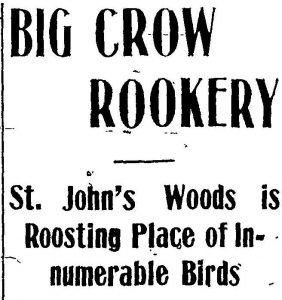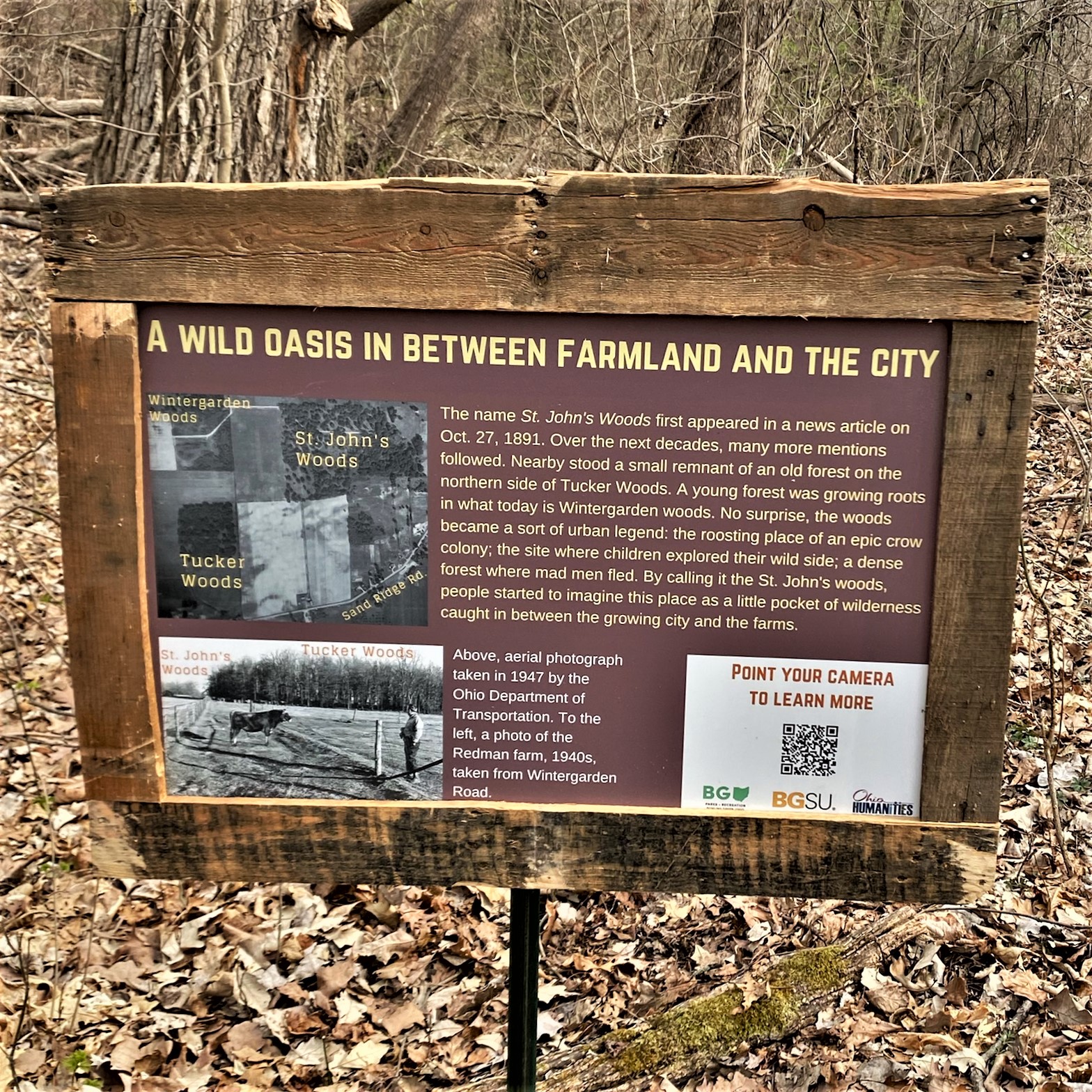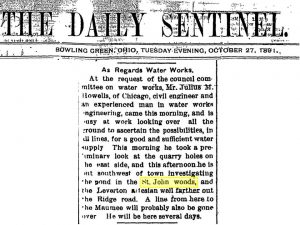
This is the first newspaper article with a reference to St. John woods. In the article, the woods are mentioned because it is a possible location for the town’s new water works. This is important because it was the first time St. John woods was distinguished from St. John farm.
The word “woods” can also evoke a certain imaginary of a place that has a life of its own and is beyond human control. We see several stories about the wildlife and other aspects of the woods that further our fascination with the “wilds” within. An article in the Sentinel-Tribune from 1905 boasts that St. John woods became “one of the greatest crow rookeries of the United States.” Other newspaper articles speak of mammoth hawks and snakes. The woods became identified as a place bursting with wildlife.
More articles on the wildlife of St. John woods are:
- “Local Happenings” on Page 4 of The Daily Sentinel, published in Bowling Green, Ohio on Wednesday, January 24th, 1900.
- “Mammoth Hawk Killed” on Page 7 of The Wood County Sentinel Tribune, published in Bowling Green, Ohio on Thursday, October 27th, 1921.

From the 1890s and more decidedly after the 1920s, the community shifted its perception of this wooded area on the west side of the city, from one that privileged the economic use of the land to one that emphasized the fascination with the natural world and outdoor recreation. During this shift, St. John’s farm began to slowly disappear into a more natural space that the community utilized and perceived in different ways. The land was used especially by the Scouts, which helped St. John woods be viewed more as a natural location rather than just land.
Learn More
Emerson’s On Nature, a classic in American environmental thought, introduces the notion of nature as a commodity and nature as beauty. As a commodity, Emerson believed that humankind should make an efficient use of the land for their own sustenance. But Emerson also proposed that nature was a way for humans to transcend their existence through the contemplation of beauty. Emerson’s ideas were influential in the landscape painting tradition, nature writing, and even in shaping policy.
These articles about our local wildlife echo the ideas in The Land Speaks, a book edited by Debbie Lee and Kathryn Newfont that proposes that people with an everyday dealing with a natural environment develop an ability to “listen” to the land and understand its world of signals. The listening skills are particularly important for those who live off the land, such as loggers, trappers and hunters. In today’s society in which outdoor recreation is a main way to connect to the land, accomplished birders excel at these listening skills, but being able to understand calls, alarms and other signals that birds pass to each other.
Sources
- The Daily Sentinel, October 27, 1891.
- The Daily Sentinel, January 24, 1900.
- The Daily Sentinel-Tribune, April 30, 1909.
- Wood County Sentinel-Tribune, October 27, 1921.
Credits of the images used in the sign
- Property of Carlene M. (Redman) Creeps, gifted to Bowling Green Wintergarden/St. Johns Nature Preserve.
- Aerial photography, Ohio Department of Transportation, 1947.
Text, research and content created by Charles Baither, M.A. student in History, and Amílcar E. Challú, associate professor of History. Edited by Carolyn Dailey, history senior.


